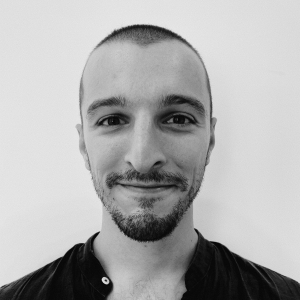Duccio Nobili
Dr. Duccio Nobili
Bibliotheca Hertziana - Max Planck Institut für Kunstgeschichte (September – November 2023)
Postdoc Projekt: The First Words from October. The Rediscovery of Russian and East-European Avant-gardes in the Years of the Protest.
Vita


Born in Milano, in 1991. He received his Ph.D. at Scuola Normale Superiore in Pisa, with a dissertation devoted to some issues of survival and re-invention of the sculptural medium in Italy from 1967 to 1978. During his studies, he wrote about leading Italian and European sculptors of the second half of the XX century, such as Lucio Fontana, Anthony Caro, Pietro Consagra, Francesco Somaini, and Ettore Colla. He is now a Paris X Rome Fellow at Biblioteca Hertziana - Max Plank Institute for Art History and DFK Paris, Max-Weber Stiftung, with a project focused on the artistic and cultural exchanges between the two sides of the Iron Curtain during the Sixties and the Seventies.
Forschungsschwerpunkt 

The First Words from October. The Rediscovery of Russian and East-European Avant-gardes in the Years of the Protest
My project aims to focus on the visual and critical reception of Russian and East-European constructivism in Italy and France from 1964 to 1978. In those years the more radical wings of the Italian and French Communist Parties started to feel a need to come back to the roots of communist culture, in a version not yet contaminated by the Stalinist totalitarianism (this operation was encouraged by the thaw of the political and cultural relationship between East and West during the Chruščëv administration). As a result, Russian Constructivism became, in the eyes of European communists, the only true revolutionary art that ever existed. Thus, writings, artworks, posters and portraits of artists from that avant-garde became to assume a pivotal role in Italian and French cultures at different levels: structuralist and aesthetic theories written in the Twenties were developed and used to offer a new and Marxist-driven alternative on modernist art criticism; on the other hand, artists found a new boost in the Russian and East-European visual culture to make their works more politically engaged. Furthermore, in the countercultural environments, these icons of October Revolution became a widespread model for design, typography and content of posters, tazebao and political statements.
Kontakt




